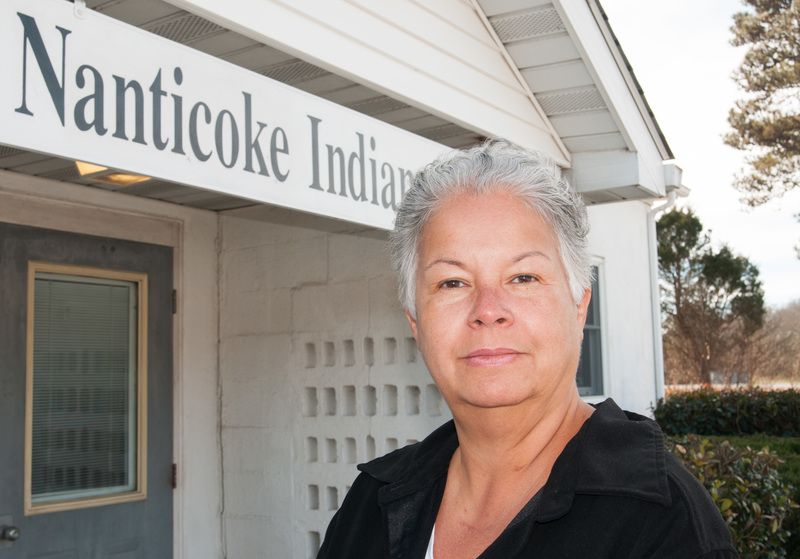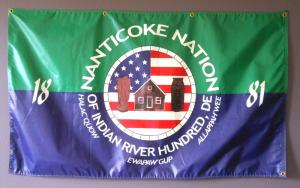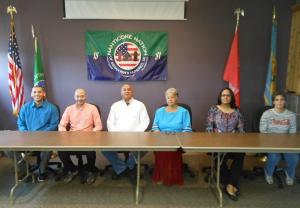Natosha Carmine: Nanticoke Indian Association chief
For Natosha Carmine, being elected as the first woman chief of the Nanticoke Indian Association is simply a matter of fact. She said she didn’t realize the magnitude of her election until she attended a Jan. 9 powwow in Bel Air, Md.
Visiting dignitaries in the crowd were being recognized, and when it got to her, she said, she was introduced as the first woman chief of the Nanticokes. Carmine said she couldn’t believe the response.
The meaning of the flag
“Honestly, I really hadn’t thought about it,” she said. “I didn’t want to become chief to be the first woman chief. That’s when I realized the impact and how important an opportunity this is.”
Carmine was sworn in as chief during a Jan. 5 meeting. She was unopposed in her bid for chief, a two-year term. She has served on the association's five-member tribal council since 2012.
According to the association’s website, the Nanticoke Indians have been living on the land between the Chesapeake Bay and Atlantic Ocean since before English explorer and captain John Smith recorded their existence in 1608.
The tribe was officially recognized as an incorporated body by the state of Delaware March 10, 1881. There were 31 members to that body.
Carmine said four of her great-grandfathers were members of the original 31.
Carmine, 57, describes herself as a true Delawarean. Born in Millsboro, she and her husband, who are coming up on 30 years of marriage, are graduates of Sussex Central. She attended Goldey-Beacom College in Wilmington. She works as a paralegal for a law firm in Newark and spends every weekend in Millsboro. She is the middle sibling of five and the only girl.
Growing up in Sussex County, Carmine remembers not really being accepted by the white community or the black community. She declined to go into too much detail or dwell on past experiences, because she likes to remain positive.
“Sometimes we just weren’t accepted, and there were times that was a struggle,” she said. “But that was in the 1970s, and hopefully that’s all changed.”
She said going to college in Wilmington and moving to Newark was an eye-opening experience. She said it taught her she was going to be fine.
“Color was not a barrier,” she said. “Being a woman in a man’s world was going to be fine.”
Proudly, Carmine’s Indian name is Weaver of the Web. She said as a spider she’s able to weave the different needs and wants of the community for the common good. She said it’s a trait she truly believes in. Asked if she would be afraid to suck the blood out of someone who disturbed that web, she offered a wry smile.
Looking into the future, Carmine said she’s confident she can do the job as chief. She said she thinks her tribe members elected her because they know she’ll respond to questions and situations thoughtfully, not with with emotion.
She said this is an interesting time for the tribal council because she is one of its older members. In years past, she said, 57 would have made her the youngest member. Optimistically, she said time will tell how the young council fulfills its duties.
Carmine said she is already looking forward to the tribe’s 39th annual Powwow in September. It’s time with tribe members, and it’s a renewing of the spirit, she said.
Carmine said she was tentative about sitting down for her first interview ever, but, she also said, her feelings will be the exact opposite when she enters the dance arena as the tribe’s chief during the Powwow. It’s a time for reflection on what the Nanticoke Indians stand for, she said.
“The Powwow is in our nature,” she said confidently. “I understand what that represents."
Chris Flood has been working for the Cape Gazette since early 2014. He currently covers Rehoboth Beach and Henlopen Acres, but has also covered Dewey Beach and the state government. He covers environmental stories, business stories and random stories on subjects he finds interesting, and he also writes a column called Choppin’ Wood that runs every other week. He’s a graduate of the University of Maine and the Landing School of Boat Building & Design.
























































